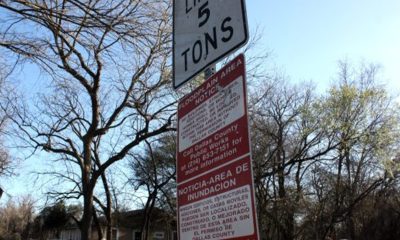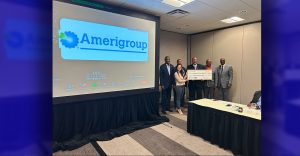Energy
Power52 Prepares Citizens for Work in Solar Industry
THE AFRO — Ten individuals from Baltimore City and surrounding counties recently graduated from Power52 Energy Institute poised for a life of sustained success and self-sufficiency. The institute is the centerpiece of Power52, a solar initiative that provides employment training for at-risk adults, returning citizens, and underserved individuals in preparation for careers in the solar industry as well as other green job opportunities.
Ten individuals from Baltimore City and surrounding counties recently graduated from Power52 Energy Institute poised for a life of sustained success and self-sufficiency. The institute is the centerpiece of Power52, a solar initiative that provides employment training for at-risk adults, returning citizens, and underserved individuals in preparation for careers in the solar industry as well as other green job opportunities.
Connected over collective interests to create solutions to social challenges in disadvantaged communities, Cherrie Brooks, a Baltimore-based solar developer; Rob Wallace, a real estate executive; and Ray Lewis an iconic NFL star designed a workforce program dedicated to creating community solutions using solar initiatives for a long-term community development strategy of breaking cycles of poverty, unemployment, under employment and incarceration in urban communities across the nation.
From their deeply rooted faith, the three shared a vision of strengthening individuals from the inside and the pride that comes when one builds his future with his own hands.
Power52 Energy Institute in Baltimore City offers an accredited eleven-week comprehensive training program which includes services to help ensure that the people are successful. Power 52 believes that, “much like the power itself, the future and opportunities of those it benefits should be sustainable too.”
Here, former Baltimore Raven Ray Lewis tells the AFRO shares how Power52 has impacted lives and why he’s aligned his life’s work with this initiative.
AFRO: How did you get started with this initiative?
Ray Lewis: Well I think it was a collective vision that we all came together on with very quickly after the unrest of Freddie grey in 2015 you know, after walking the streets and trying to find out what the real issue was stemming from, you know the quality of jobs we came to hone in on. Then we sat down a few times and really thought about it, worked on it and Me, Cherrie and Daniel came up with how we could use what Rob and his father have done for many years with this energy, and solar. So, we sat down and thought how do we make this work for the community, how do we truly add to the workforce element. And I think that’s how this just naturally happened and with me being a part of it was kind of a natural thing.
AFRO: How does Power52 Institute prepare individuals with tools for self-sufficiency?
Ray Lewis: True tools! like tools you can actually steal. Things you can look at when you go through our course, and one of the reason we have an 85 percent placement rate. The moment somebody leaves or graduates Power 52’s 11 to 16-week program, we are getting people jobs immediately. And keep in mind, these are people that have been told, “You can’t,” and “No, your record does not show this,” and “You got this history of this.” Everybody has made a mistake somewhere in life and that’s why the rebuilding of individuals and giving them their imagination back again is important.
Think about solar energy and climate change. Think about all of these different things that are starting to happen. When I tell you we are one of the very few black companies in solar. But that’s the way we are going; our planet is going solar regardless. We have to; the climate is dictating it and everything around us is dictating it. So we are saying as a company, “No we will not be last in this field.” “No we will be more engaged in this field and we will educate people so they can understand how not to just hold a job.”
AFRO: Why makes this initiative unique?
Ray Lewis: I’ve been a part of Baltimore a long time. From day one living in Baltimore, I asked, “why don’t we have anyone from the community working in our community? The reason I am going this route is to show the power of Power 52. Power 52 takes us in each and every community; and it does not hustle the community, it does not ponder something that cannot happen. We promise you a new life, we promise you a new path, but you have to do the work. That’s the beauty of it!
This article originally appeared in The Afro.
Business
Biden’s ‘Hydrogen Hub’ Plan Set to Generate Thousands of Clean Energy Jobs in California
As part of President Biden’s Investing in America agenda, a key pillar of Bidenomics — the President’s economic plan — the U.S. Department of Energy (DOE) launched the $7 billion Regional Clean Hydrogen Hubs (H2Hubs) program across the nation on Oct. 13.
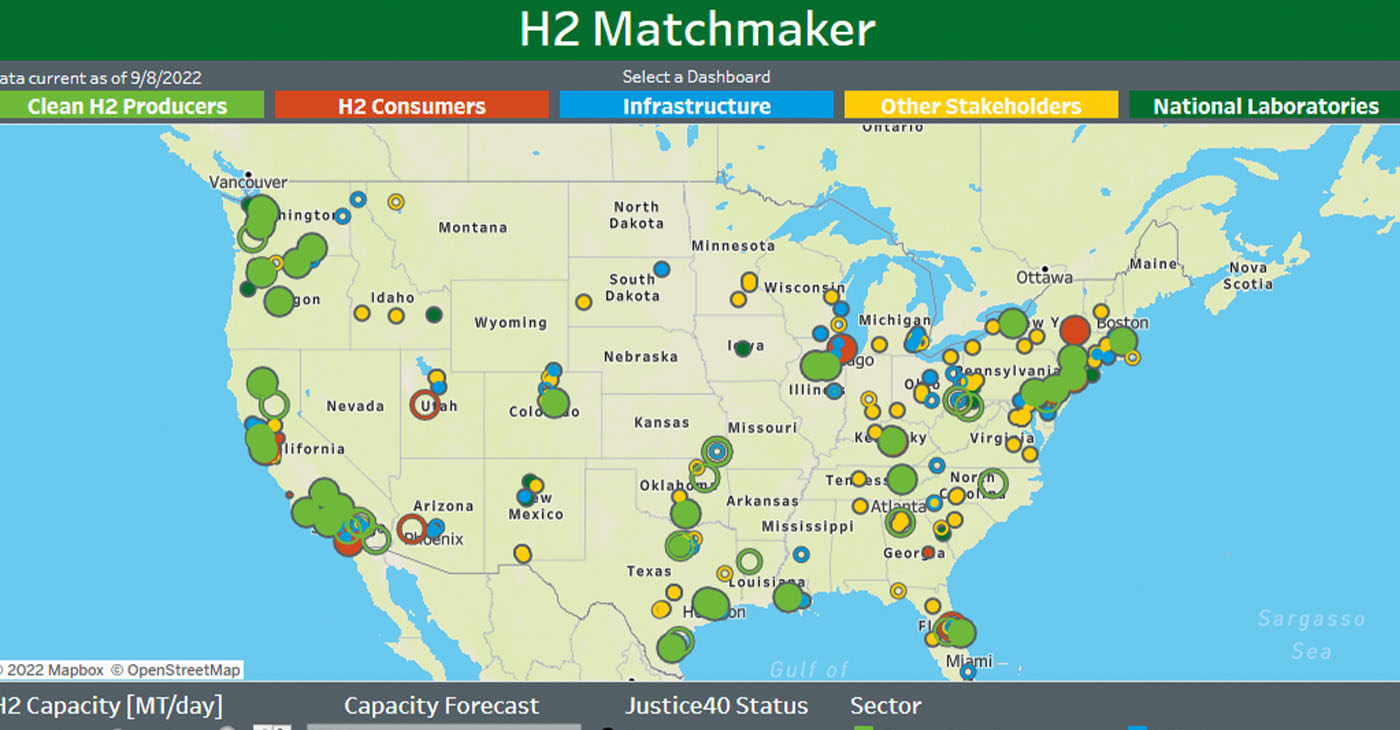
By California Black Media
Last week, clean energy advocates and industry experts praised a new federal government program that is expected to bring thousands of jobs to California.
As part of President Biden’s Investing in America agenda, a key pillar of Bidenomics — the President’s economic plan — the U.S. Department of Energy (DOE) launched the $7 billion Regional Clean Hydrogen Hubs (H2Hubs) program across the nation on Oct. 13.
The program, which creates seven regional hubs in seven states, including California, is expected to be a boon for Black and other minority communities.
It is part of the federal government’s Justice40 initiative, which requires that 40% of the “overall benefits” of the program will be used to invest in marginalized communities and places that have been disproportionately impacted by pollution.
“The seven selected regional clean hydrogen hubs will catalyze more than $40 billion in private investment and create tens of thousands of good-paying jobs – bringing the total public and private investment in hydrogen hubs to nearly $50 billion,” the Biden-Harris administration said in a statement.
The program is designed to accelerate the commercial-scale deployment of low-cost, clean hydrogen — a valuable energy product that can be produced with zero or near-zero carbon emissions and is crucial to meeting Biden’s climate and energy security goals, according to the White House.
“Unlocking the full potential of hydrogen—a versatile fuel that can be made from almost any energy resource in virtually every part of the country—is crucial to achieving Biden’s goal of American industry powered by American clean energy, ensuring less volatility and more affordable energy options for American families and businesses,” stated U.S. Secretary of Energy Jennifer M. Granholm.
“This federal investment is significant because it complements and it unlocks so much private investment and investment from the states,” said Chris Hannan, president of ARCHES partner State Building and Construction Trades Council of California, in a statement.
California Black Media
Biden’s ‘Hydrogen Hub’ Plan Set to Generate Thousands of Clean Energy Jobs in California
Last week, clean energy advocates and industry experts praised a new federal government program that is expected to bring thousands of jobs to California. As part of President Biden’s Investing in America agenda, a key pillar of Bidenomics — the President’s economic plan — the U.S. Department of Energy (DOE) launched the $7 billion Regional Clean Hydrogen Hubs (H2Hubs) program across the nation on Oct. 13.
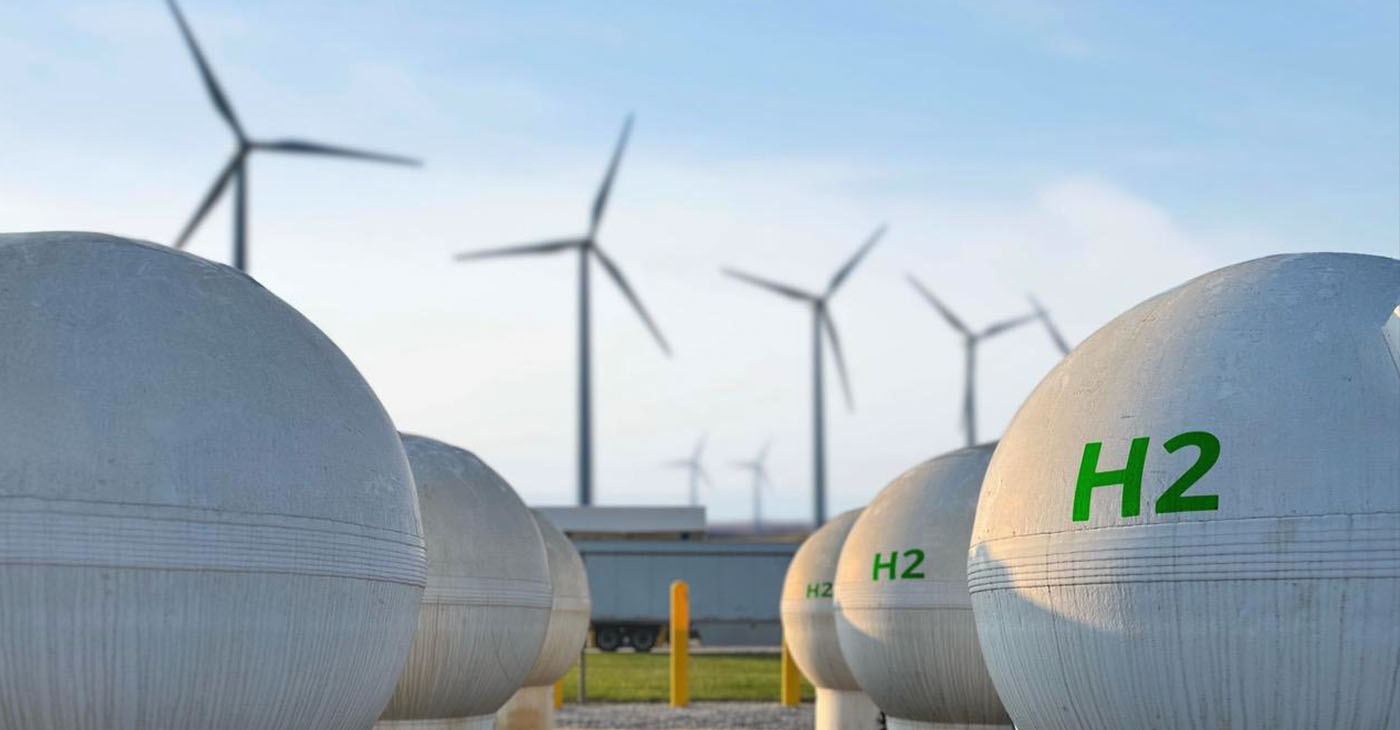
By California Black Media
Last week, clean energy advocates and industry experts praised a new federal government program that is expected to bring thousands of jobs to California.
As part of President Biden’s Investing in America agenda, a key pillar of Bidenomics — the President’s economic plan — the U.S. Department of Energy (DOE) launched the $7 billion Regional Clean Hydrogen Hubs (H2Hubs) program across the nation on Oct. 13.
The program, which creates seven regional hubs in seven states, including California, is expected to be a boon for Black and other minority communities.
It is part of the federal government’s Justice40 initiative, which requires that 40% of the “overall benefits” of the program will be used to invest in marginalized communities and places that have been disproportionately impacted by pollution.
“The seven selected regional clean hydrogen hubs will catalyze more than $40 billion in private investment and create tens of thousands of good-paying jobs — bringing the total public and private investment in hydrogen hubs to nearly $50 billion,” the Biden-Harris administration said in a statement.
The program is designed to accelerate the commercial-scale deployment of low-cost, clean hydrogen — a valuable energy product that can be produced with zero or near-zero carbon emissions and is crucial to meeting Biden’s climate and energy security goals, according to the White House.
“Unlocking the full potential of hydrogen — a versatile fuel that can be made from almost any energy resource in virtually every part of the country — is crucial to achieving Biden’s goal of American industry powered by American clean energy, ensuring less volatility and more affordable energy options for American families and businesses,” stated U.S. Secretary of Energy Jennifer M. Granholm.
“This federal investment is significant because it complements and it unlocks so much private investment and investment from the states,” said Chris Hannan, president of ARCHES partner State Building and Construction Trades Council of California, in a statement.
Activism
Minority Environmental Justice Groups Want to Connect to Millions in EPA Funding for California
The California Environmental Justice Alliance (CEJA) says the programs they have in place to restore decades of environmental devastation and neglect in minority communities can play a key role in achieving the state and federal green goals to enforce regulations and distribute resources more fairly and equitably.
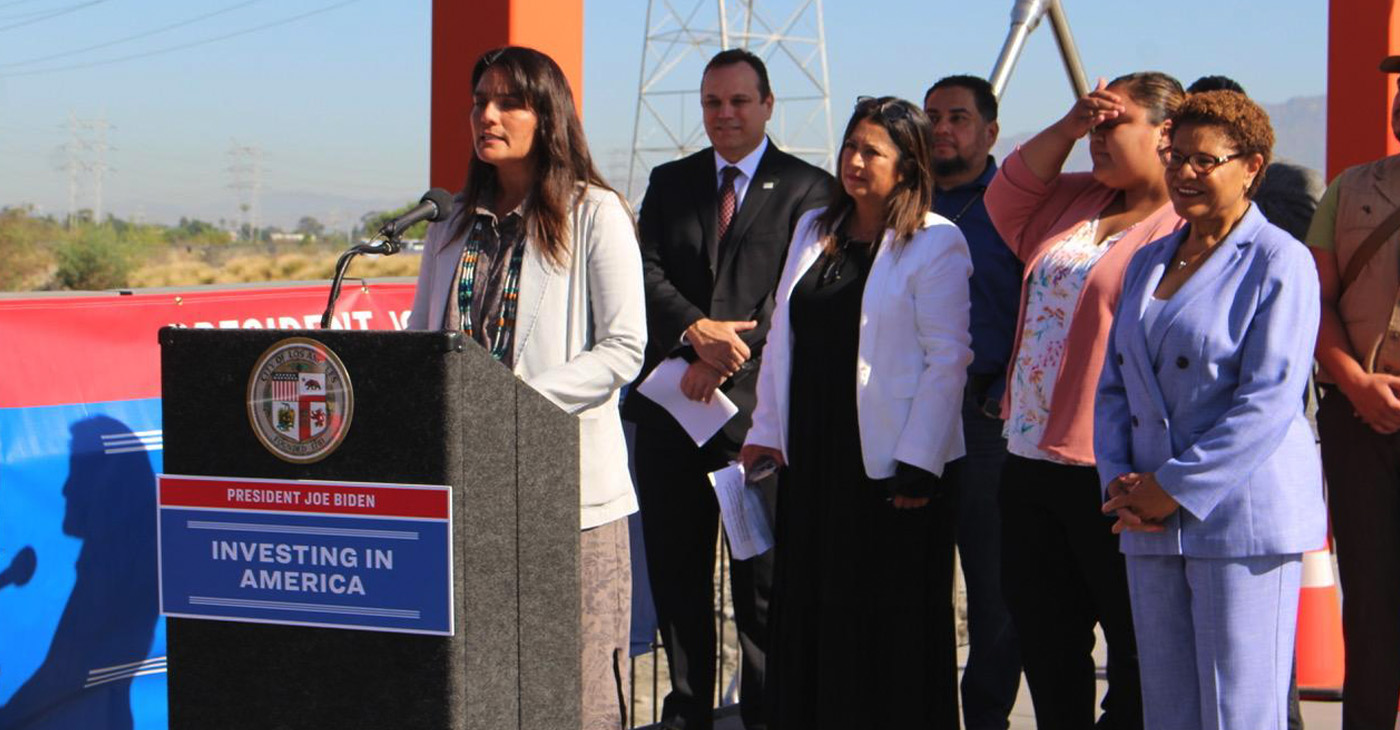
By Lila Brown, California Black Media
Environmental justice advocates in California petitioned Gov. Gavin Newsom this past summer, asking the state to direct a portion of the millions in federal and state dollars California is investing in cleaning and greening communities to Black and other minority organizations.
The California Environmental Justice Alliance (CEJA) says the programs they have in place to restore decades of environmental devastation and neglect in minority communities can play a key role in achieving the state and federal green goals to enforce regulations and distribute resources more fairly and equitably.
“There’s systemic racism that we are trying to dismantle that is beyond the usual American concepts of environmentalism and there’s a lot of interrelated and intersecting issues that we’re trying to fix on the ground, Mari Rose Taruc, CEJA’s energy director, told California Black Media.
Taruc says environmental groups recognizing the harm done to communities of color in the past — and their implication on the local level — is a critical part of the environmental justice movement.
“Environmental justice was born out of the Civil Rights Movement, and that is to the credit of Black organizers that came out of the South to raise consciousness of environmental pollution and destruction of dumping grounds primarily located in BIPOC communities,” she said.
CEJA is a coalition of the 10 biggest environmental justice organizations that coordinate efforts to protect the health and well-being of Black, Indigenous, Latino, and Asian Pacific Islander communities in California. The organization also develops programs and raises money to tackle some of the new challenges communities are facing due to the climate crisis.
In July, Environmental Protection Agency (EPA) Regional Administrator Martha Guzman presented $2 million to Los Angeles Mayor Karen Bass to revitalize the Taylor Yard along the Los Angeles River, turning a former freight railyard into urban green space.
The project reinforces President Biden’s goal for environmental justice to restore the damage that has been done from previous administrations ranging from decades of neglect to the lack of enforcement as it pertains to environmental laws, regulations, and policies.
Historically, railyards contaminated nearby ground and waters with petroleum and other dangerous contaminants.
Guzman spoke with California Black Media about policies that led to disadvantaged and low-income communities being the areas where toxic and hazardous wastes were disposed, as opposed to more affluent neighborhoods.
“This can be traced to many of our origins, be it slavery or the taking of indigenous lands here in the West,” she said. “We see where all these facilities are, and we know that race is the largest determinant of pollution.”
Guzman says the Biden administration is keeping equity and environmental justice front of mind.
“We have to invest in these communities because we have to be intentional about dealing with those generations of neglect and land use decisions that led to a disparate impact to our communities,” says Guzman who leads the EPA efforts to protect public health and the environment for the Pacific Southwest region spanning Arizona, California, Hawaii, Nevada, the U.S. Pacific Islands territories, and 148 Tribal Nations.
The investment strategy, she says, intends to heal legacy issues and now the EPA’s No. 1 priority is enforcement.
According to Bass’ office, the City of Los Angeles plans to restore this site as part of a greater L.A. River initiative to restore ecosystems and habitats, form walkable trails along 52 miles of the river, and create easy access points for residents to enjoy what the river has to offer.
Throughout California, EPA awarded $9,299,566 in total funding from the Fiscal Year 2023 Brownfields Multipurpose, Assessment, Revolving Loan Fund, and Cleanup (MARC) Grant Funding through 12 separate grants.
According to the EPA, a brownfield is a property, the expansion, redevelopment, or reuse of which may be complicated by the presence or potential presence of a hazardous substance, pollutant or contaminant. It is estimated that there are more than 450,000 brownfields in the U.S.
“This funding provides unprecedented resources and highlights how President Biden’s Investing in America agenda and the Bipartisan Infrastructure Law are delivering environmental and economic benefits for California,” according to a press release from Guzman’s office.
The EPA is investing nearly $100 billion nationwide to deliver clean water and clean air, advance our transition to clean transportation, and enact environmental justice (EJ), especially in communities that have been disadvantaged and underserved, many of which are low-income communities or communities of color.
In addition, President Biden’s Executive Order 14008 — Tackling the Climate Crisis at Home and Abroad announced Justice40, which mandates that at least 40% of the benefits of specific federal programs — including brownfields and those created by BIL and IRA — must flow to disadvantaged communities. In April 2022, EPA committed to meeting and exceeding this mandate.
Taruc says CEJA has not received any of the EPA funds, but the organization continues to find opportunities for different organizations throughout the state to be able to connect to funding programs focused on environmental justice.
One of the ways that CEJA ensures communities are recipients of funds is through programs such as “Solar for All” so that low-income households receive solar panels to improve their homes and lower their fossil fuel consumption, which reduces emissions.
Taruc says one focus of CEJA is ensuring people — particularly disadvantaged minorities who have been disproportionately impacted — live in safe and clean environments.
“Most environmental justice groups believe we should not build housing next to oil drilling sites and there should be a buffer zone of where you build new housing. We’ve been fighting to close these oil wells because housing should be built in places that are not only affordable but safe,” Taruc concluded.
-

 Activism3 weeks ago
Activism3 weeks agoOakland Post: Week of March 20 – 26, 2024
-

 #NNPA BlackPress3 weeks ago
#NNPA BlackPress3 weeks agoMayor, City Council President React to May 31 Closing of Birmingham-Southern College
-

 #NNPA BlackPress3 weeks ago
#NNPA BlackPress3 weeks agoFrom Raids to Revelations: The Dark Turn in Sean ‘Diddy’ Combs’ Saga
-

 #NNPA BlackPress3 weeks ago
#NNPA BlackPress3 weeks agoCOMMENTARY: D.C. Crime Bill Fails to Address Root Causes of Violence and Incarceration
-

 #NNPA BlackPress3 weeks ago
#NNPA BlackPress3 weeks agoCOMMENTARY: Lady Day and The Lights!
-

 #NNPA BlackPress3 weeks ago
#NNPA BlackPress3 weeks agoBaltimore Key Bridge Catastrophe: A City’s Heartbreak and a Nation’s Alarm
-

 #NNPA BlackPress3 weeks ago
#NNPA BlackPress3 weeks agoBaltimore’s Key Bridge Struck by Ship, Collapses into Water
-

 Activism2 weeks ago
Activism2 weeks agoOakland Post: Week of March 27 – April 2, 2024

